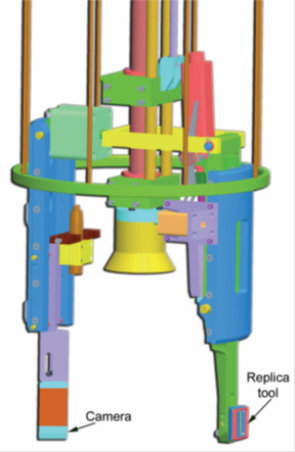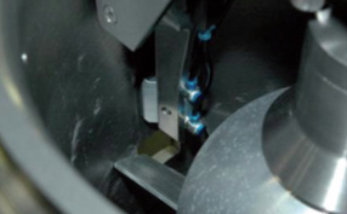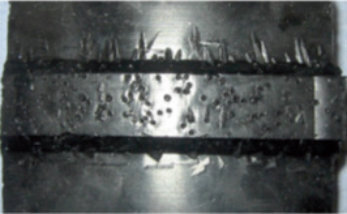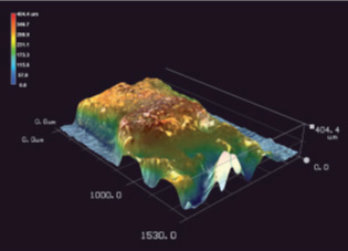Background
When it is not possible to perform a metallographic examination by taking a sample directly from a part to be checked, an investigation can be performed through a replica process. After a proper surface preparation, cellulose acetate sheets are used to make a copy or “replica” of the microstructure of the metal surface to be examined.
The replica process is an option within the field of nondestructive testing (NDT) (surface inspection) that has been used in industry for some time. Special applications include geometries and wear measurements on assembly parts. The process is also used in the nuclear industry and fulfills the specific requirements for application to nuclear components. Replicas can be performed in air as well as under water.
Because indications are evaluated on the replica and not on the component itself, this process provides for flexible component handling.
Description
Westinghouse has developed a process and tools for the measurement of wear that includes the visual inspection and measurement of the wear indication on the performed replicas. This is of great use when accessibility is a concern.
The main process steps are:
- Manipulator positioning and clamping on the pump housing.
- Visual inspection of the worn areas.
- Positioning of the replica tool at the worn area.
- Replica performance. The curing time varies with the temperature and amounts to about 30 minutes at 25 C.
- Manipulator to the surface and removal of the replica.
- Measurement and evaluation of the performed replica by means of a laser scanner.
- Evaluation of the wear mechanism using the replica surface geometry.
The performed replica can be evaluated destructively and non-destructively using conventional measurement instruments. The replica material has been qualified for use in the nuclear primary system, fulfilling all requirements for materials used in a primary water environment. The replica material has the following properties:
- Good dimensional stability: + 1 μm.
- High tensile strength, tear resistance and elongation.
- The replica resolution is < 3 μm.
- No exothermic reaction during curing; no vaporization.
- Chemical stability in water, acids and bases.
Benefits
The benefits of the replica process within the NDT field include the following:
- Quick to deploy on-site through short preparation time in-house.
- 3D view of the inspection surface by creating a replica (negative sample) of the inspection area.
- Dimensional record by measuring the replica sample.
- Indirect visual inspection of the concerned area with high-resolution color camera.
- Inspection down to 30m under water.
- No special additional instrument settings are needed.
- Detailed material structures can be evaluated with high accuracy.
- The 3D negative makes it possible to “grasp” the inspected area.
- Measurement of material surface degradation
- Wall thickness reduction due to material erosion
- Geometry changes
- - Surface characterization
Experience
The quality of the replica process was proven during the qualification phase. The first on-site application of the process took place in a German nuclear power plant. Since then the process has been used frequently by Westinghouse throughout Europe.

Manipulator for pump housing inspection

Replica tool

Test replica

Digital microscope picture of replica





